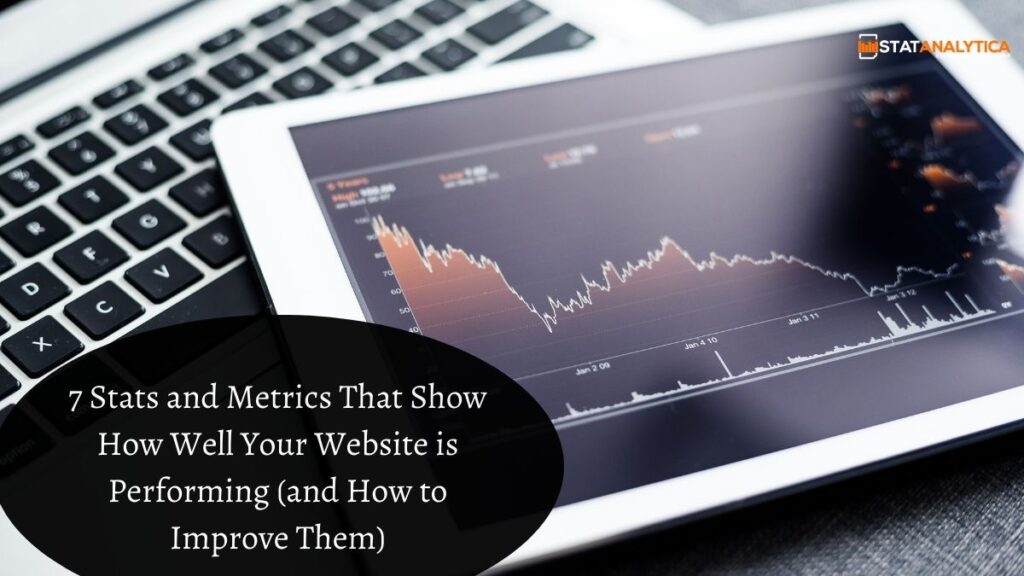It takes hard work to get your website up and running, and you’re likely eager to measure its performance. However, you need to monitor the right metrics to benefit from the most actionable insights. But what metrics do you use, and how can you use them to improve your site?
How to Use Stats and Metrics to Improve Your Website
Table of Contents
Without actionable data and relevant insights, it will be hard for you to improve your website.
Here are 7 Stats and Metrics That Show How Well Your Website is Performing.
1. Total Visits
The “total visits” metric, while generic, can show you how popular your blog is with audiences. Having consistently high “total visits” metrics is a great thing, as advertisers and affiliates are mostly interested in this number. They want their products to be seen by more people.
It can also tell you how effective your digital marketing efforts have been, so keep an eye on this metric if you recently ran a new campaign. If this metric keeps going down, that’s a sign your marketing isn’t effective. Use more accurate metrics, like bounce rate, to examine why that is.
2. Page Load Time
Having a fast page load time is essential if you want to keep your visitors engaged with your website. Aim to have a page load time below 5 seconds, as longer page load times can cause visitors to abandon your site. You can decrease load time by optimizing images and code.
Your hosting service may also cause your site to slow down, especially if there are thousands of other websites competing for bandwidth or their hard drive is too small. That is why it is important to select a good Web hosting provider to host your website. If you need help finding the right hosting provider, go check out HostingAdvice.com for all your hosting needs.
3. Traffic Sources
Tracking the channels that visitors are coming from to get to your website is essential. You can distinguish between organic, direct, referral, and social media traffic. Identifying the channels with the highest traffic can give you insight into the efficacy of your digital marketing efforts.
A multi-channel approach is the best way to attract a high amount of traffic, but you have to make sure you’re active on the right websites. This means researching your competition and finding similar customers in your niche. Stick to marketing on 3 platforms, including your site.
4. New vs. Returning Visitors
A good way to increase sales efficiency is by knowing exactly who’s visiting your website. Returning visitors clearly see something in your website, and knowing what that is can increase the number of people who join them. This can be done through content marketing and SEO.
You can also know what’s attracting new visitors by using heat maps. Heat maps give you an indication of where people click most often on your website. This info will help you determine where to place relevant content or buttons. Most modern tools will generate heat maps for you.
5. Device Insights
Knowing the type of devices that your visitors are using to access your website is important. This will enable you to optimize the website for specific devices, ensuring a good experience for all types of visitors. To do this properly, you may need to learn more than one coding language.
On the other hand, you could sign up for a content management platform, such as WordPress or Wix, that lets you make individual UI changes for each device. These tools can be helpful if you have features that won’t work on a mobile phone or tablet device, such as hover effects.
6. Pages Per Visit
This metric will tell you how many pages people are exploring on your website during each visit. Having a good page-per-visit rate is essential if you want to make sure visitors are consuming your content and getting the full experience. You can improve this metric through internal linking.
Intelligent internal linking can help move customers through your funnel, which eventually leads to a sale. The top of the funnel will include general content that sparks your visitor’s interest. This will link to the middle and bottom of the funnel, which includes more detailed content.
7. Bounce Rate
Bounce rate is defined as the number of people who leave the website after viewing one page, in comparison to the number of people who view multiple pages or complete a desired action. A lower bounce rate, ideally below 40 percent, proves your website content is very engaging.
Average visit duration is also affected by bounce rate. If the average visit duration is high, it indicates that your website content is engaging enough to keep people around for longer. An average visit duration of 2-4 minutes is ideal, but that’s typically for text-based blog content.


